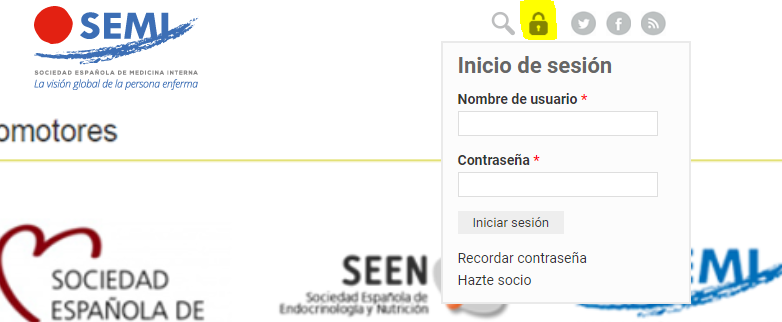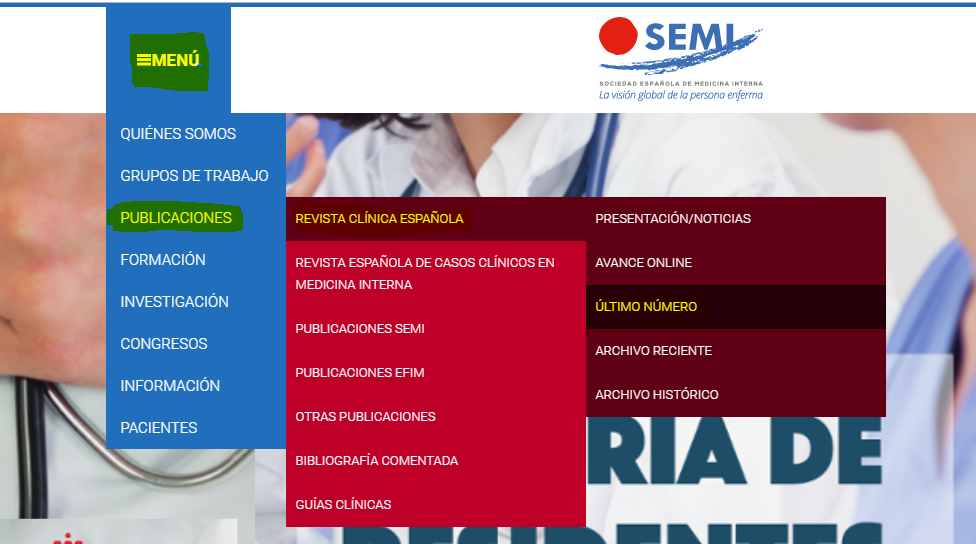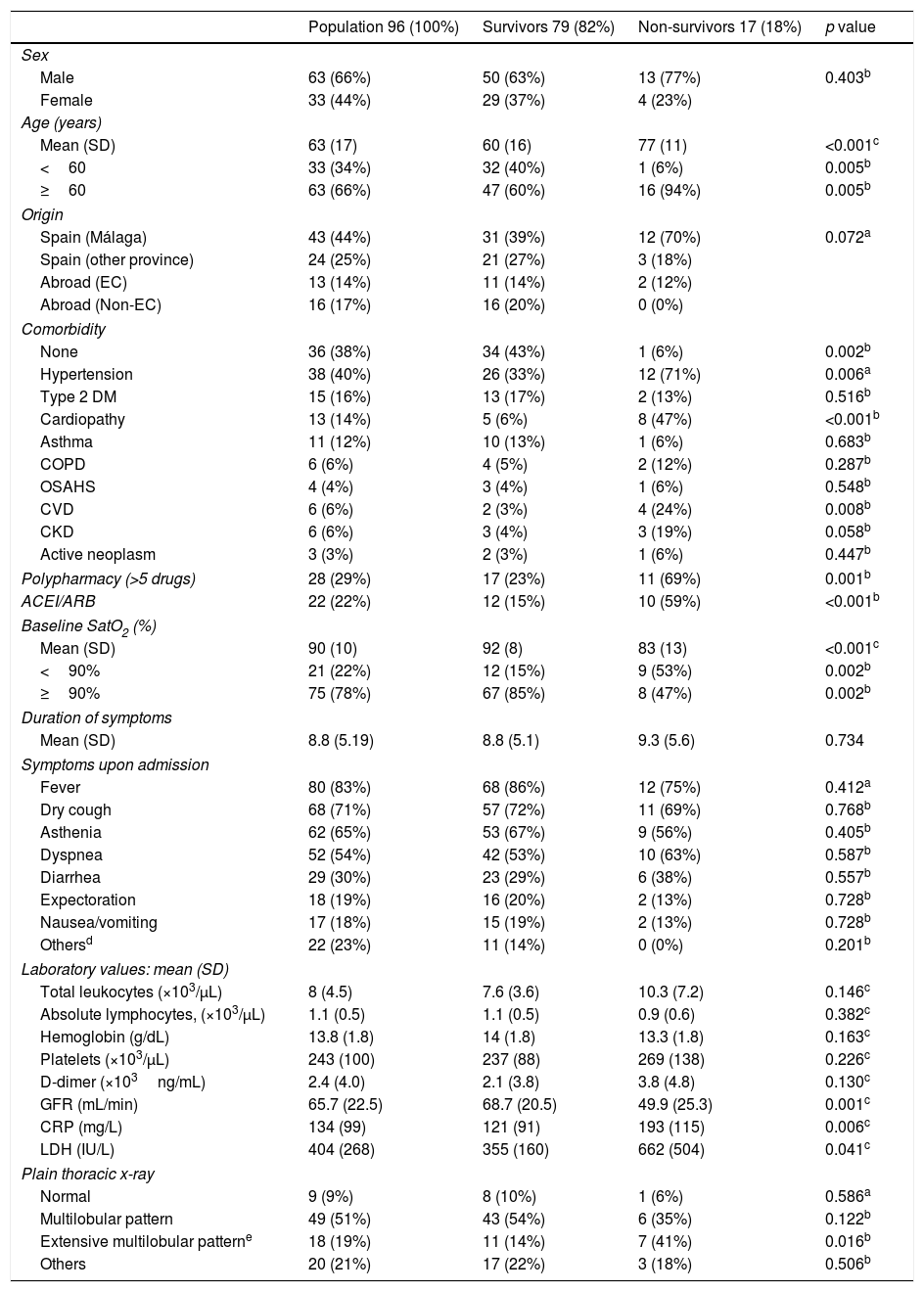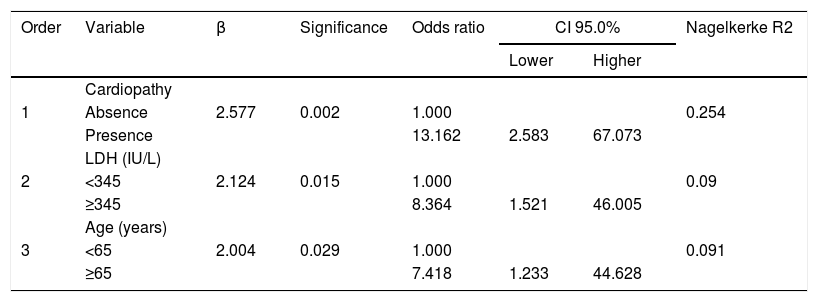To describe clinical features, comorbidity, and prognostic factors associated with in-hospital mortality in a cohort of COVID-19 admitted to a general hospital.
Material and methodsRetrospective cohort study of patients with COVID-19 admitted from 26th February 2020, who had been discharged or died up to 29th April 2020. A descriptive study and an analysis of factors associated with intrahospital mortality were performed.
ResultsOut of the 101 patients, 96 were analysed. Of these, 79 (82%) recovered and were discharged, and 17 (18%) died in the hospital. Diagnosis of COVID-19 was confirmed by polymerase chain reaction to SARS-CoV2 in 92 (92.5%). The mean age was 63 years, and 66% were male. The most frequent comorbidities were hypertension (40%), diabetes mellitus (16%) y cardiopathy (14%). Patients who died were older (mean 77 vs 60 years), had higher prevalence of hypertension (71% vs 33%), and cardiopathy (47% vs 6%), and higher levels of lactate dehydrogenase (LDH) and reactive C protein (mean 662 vs 335 UI/L, and 193 vs 121mg/L respectively) on admission. In a multivariant analysis the variables significantly associated to mortality were the presence of cardiopathy (CI 95% OR 2,58–67,07), levels of LDH≥345 IU/L (CI 95% OR 1,52–46,00), and age≥65 years (CI 95% OR 1,23–44,62).
ConclusionsThe presence of cardiopathy, levels of LDH≥345 IU/L and age≥65 years, are associated with a higher risk of death during hospital stay for COVID-19. This model should be validated in prospective cohorts.
Describir el perfil clínico, comorbilidad y factores pronósticos de mortalidad intrahospitalaria en una cohorte COVID-19 de un hospital general.
Material y métodosEstudio de cohortes retrospectivo de pacientes con COVID-19 ingresados desde el 26 de febrero de 2020, y dados de alta o fallecidos hasta el 29 de abril; estudio descriptivo y análisis de factores asociados a la mortalidad intrahospitalaria.
ResultadosDe los pacientes ingresados (N=101), fueron analizados 96, siendo dados de alta por curación 79 (82%), y falleciendo 17 (18%). Se confirmó COVID-19 por reacción en cadena de la polimerasa a SARS-CoV-2 en 92 casos (92,5%). La edad media fue de 63 años y 66% fueron varones. La comorbilidad previa más frecuente fue hipertensión arterial (40%), diabetes mellitus (16%) y cardiopatía (14%). Los pacientes que fallecieron tenían significativamente más edad (media 77 vs. 60 años), hipertensión arterial (71% vs 33%), cardiopatía previa (47% vs. 6%), y niveles más elevados de lactato deshidrogenasa (LDH) (662 vs. 335 UI/L) y proteína C reactiva (PCR) (193 vs. 121mg/L) al ingreso. En análisis multivariante, se asociaron significativamente a mayor riesgo de muerte la presencia de cardiopatía (IC 95% OR 2,58–67,07), los niveles de LDH≥345 UI/L (IC 95% OR 1,52–46,00), y la edad≥65 años (IC 95% OR 1,23–44,62).
ConclusionesEl antecedente de cardiopatía, niveles de LDH≥345 UI/L al ingreso, y una edad≥65 años, se asocian a mayor mortalidad durante el ingreso por COVID-19. Hay que validar este modelo pronóstico en cohortes prospectivas.
Article
Diríjase desde aquí a la web de la >>>FESEMI<<< e inicie sesión mediante el formulario que se encuentra en la barra superior, pulsando sobre el candado.

Una vez autentificado, en la misma web de FESEMI, en el menú superior, elija la opción deseada.

>>>FESEMI<<<









